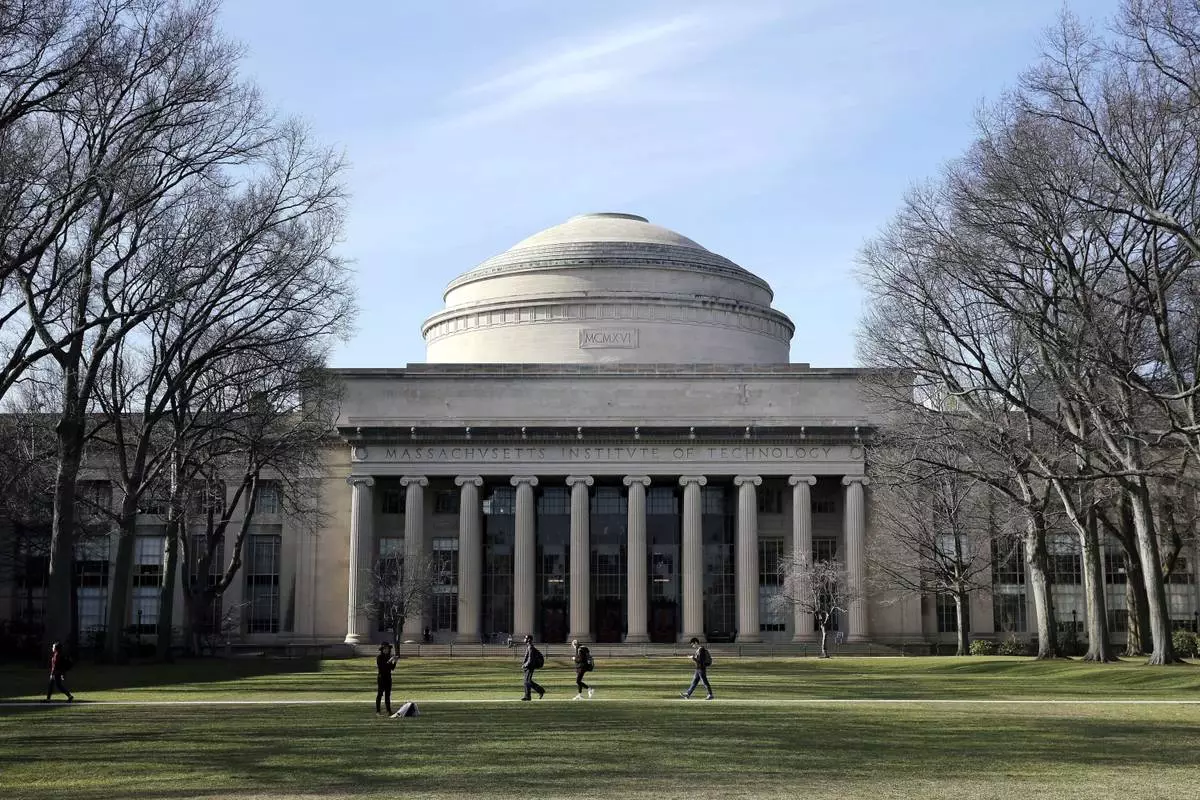NEW ORLEANS (AP) — A federal judge has weakened the Biden administration’s effort to use a historic civil rights law to fight industrial pollution alleged to have taken a heavier toll on minority communities in Louisiana.
U.S. District Judge James David Cain of Lake Charles handed down the ruling Thursday, permanently blocking the Environmental Protection Agency from imposing what are known as “disparate impact” requirements on the state.
Cain had already issued a temporary blocking order in January. His ruling was a victory for Louisiana officials who challenged the EPA policy, which was based on possible violations of Title VI of the federal Civil Rights Act of 1964. The act forbids anyone who receives federal funds from discriminating based on race or national origin. It’s been used in housing and transportation, but rarely on environmental matters. The EPA under President Joe Biden, however, tried to use it more aggressively.
The state sued in May 2023, a move that may have played a role in the EPA dropping an investigation into whether Louisiana officials put Black residents living in an industrial stretch of the state at increased cancer risk. The area, often referred to as “cancer alley” because of the amount of suspected cancer-causing pollution emitted there, stretches along the Mississippi River from Baton Rouge to New Orleans.
In its lawsuit, the state argued that the Biden administration's plans went beyond the scope of Title VI. The state said the EPA wrongfully targeted pollution policies that unintentionally hurt minorities communities most when the law applies only to intentional discrimination. The state also said the policy is discriminatory because it would allow regulation of pollutants based on the race of those affected. Cain agreed the EPA went too far.
While Cain's ruling was a victory for Republican state officials — Gov. Jeff Landry, who was attorney general when the suit was filed, and his successor in that office, Elizabeth Murrill — environmental groups decried it.
“Louisiana has given industrial polluters open license to poison Black and brown communities for generations, only to now have one court give it a permanent free pass to abandon its responsibilities,” Patrice Simms of the Earthjustice organization, said in a news release.
The ruling applies only to Louisiana and can be appealed to the 5th U.S. Circuit Court of Appeals in New Orleans.

FILE - The Marathon Petroleum Refinery is visible in Reserve, La., Thursday, Dec. 2, 2021. Environmental advocates and residents of the Louisiana chemical corridor known as Cancer Alley have spent decades calling for change in the way industrial activity is regulated there. (AP Photo/Gerald Herbert, File)
BOSTON (AP) — A study that explores the feasibility of using pigeons to guide missiles and one that looks at the swimming abilities of dead fish were among the winners Thursday of this year’s Ig Nobels, the prize for comical scientific achievement.
Held less than a month before the actual Nobel Prizes are announced, the 34th annual Ig Nobel prize ceremony at the Massachusetts Institute of Technology was organized by the Annals of Improbable Research magazine’s website to make people laugh and think. Winners received a transparent box containing historic items related to Murphy’s Law — the theme of the night — and a nearly worthless Zimbabwean $10 trillion bill. Actual Nobel laureates handed the winners their prizes.
“While some politicians were trying to make sensible things sound crazy, scientists discovered some crazy-sounding things that make a lot of sense,” Marc Abrahams, master of ceremonies and editor of the magazine, said in an e-mail interview.
The ceremony started with Kees Moliker, winner of 2003 Ig Noble for biology, giving out safety instructions. His prize was for a study that documented the existence of homosexual necrophilia in mallard ducks.
“This is the duck,” he said, holding up a duck. “This is the dead one.”
After that, someone came on stage wearing a yellow target on their chest and a plastic face mask. Soon, they were inundated with people in the audience throwing paper airplanes at them.
Then, the awards began — several dry presentations which were interrupted by a girl coming on stage and repeatedly yelling “Please stop. I'm bored.” The awards ceremony was also was broken up by an international song competition inspired by Murphy's Law, including one about coleslaw and another about the legal system.
The winners were honored in 10 categories, including for peace and anatomy. Among them were scientists who showed a vine from Chile imitates the shapes of artificial plants nearby and another study that examined whether the hair on people's heads in the Northern Hemisphere swirled in the same direction as someone's hair in the Southern Hemisphere.
Other winners include a group of scientists who showed that fake medicine that causes side effects can be more effective than fake medicine that doesn't cause side effects and one showing that some mammals are cable of breathing through their anus — winners who came on stage wearing a fish-inspired hats.
Julie Skinner Vargas accepted the peace prize on behalf of her late father B.F. Skinner, who wrote the pigeon-missile study. Skinner Vargas is also the head of the B.F. Skinner Foundation.
“I want to thank you for finally acknowledging his most important contribution,” she said. “Thank you for putting the record straight.”
James Liao, a biology professor at the University of Florida, accepted the physics prize for his study demonstrating and explaining the swimming abilities of a dead trout.
“I discovered that a live fish moved more than a dead fish but not by much,” Liao said, holding up a fake fish. “A dead trout towed behind a stick also flaps its tail to the beat of the current like a live fish surfing on swirling eddies, recapturing the energy in its environment. A dead fish does live fish things.”

Professor James Liao displays a stuffed fish while accepting a prize for physics for demonstrating and explaining the swimming abilities of a dead trout during a performance at the Ig Nobel Prize ceremony at Massachusetts Institute of Technology in Cambridge, Mass., Thursday, Sept. 12, 2024. (AP Photo/Steven Senne)

A team of researchers perform a demonstration during a performance showing that many mammals are capable of breathing through their anus while accepting the 2024 Ig Nobel prize in physiology at the Ig Nobel Prize ceremony at Massachusetts Institute of Technology, in Cambridge, Mass., Thursday, Sept. 12, 2024. (AP Photo/Steven Senne)

People in the audience throw paper airplanes toward the stage during a performance at the Ig Nobel Prize ceremony at Massachusetts Institute of Technology in Cambridge, Mass., Thursday, Sept. 12, 2024. (AP Photo/Steven Senne)

FILE - Students walk past the "Great Dome" atop Building 10 on the Massachusetts Institute of Technology campus in Cambridge, Mass, April 3, 2017. (AP Photo/Charles Krupa, File)














